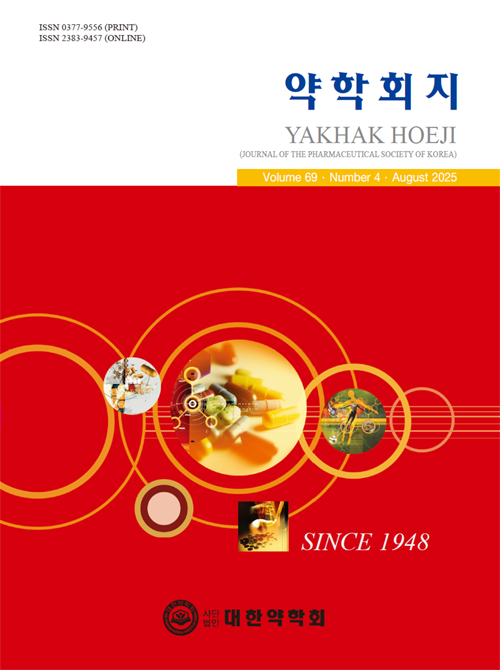선택적인 PAK 저해제를 개발하기 위한 전략
Strategies for developing selective p21-activated kinase (PAK) Inhibitors
- 대한약학회
- 약학회지
- 제69권 제4호(2025년)
-
2025.08328 - 338 (11 pages)
-
DOI : 10.17480/psk.2025.69.4.328
- 0

Through intracellular signaling pathways, p21-activated kinase (PAK) plays a pivotal role in a broad range of physiological processes related to cellular functions, including cell motility, apoptosis, cytoskeletal reorganization, proliferation, and survival. In this regard, PAK proteins could be explored as potential therapeutic targets for the treatments of various human diseases, such as cancer, cardiovascular diseases, neurological disorders, and metabolic disorders. The six PAK isoforms are classified into group I (PAK1, 2, 3) and group II (PAK4, 5, 6) on the basis of their sequence, structural homology, and regulatory mechanism. Notably, PAK1 and PAK4 have been extensively studied and recognized as promising drug targets. Considering the importance of a high therapeutic index with minimal side effects, the development of selective PAK1 or PAK4 inhibitors is essential. Indeed, selective PAK1 inhibitors (e.g. FRAX597 and FRAX1036), and selective PAK4 inhibitors (e.g. CZh-226 and GNE-2861) have been reported. However, some inhibitors have exhibited safety issues in clinical trials, likely due to low target selectivity, and no PAK inhibitors have been approved as therapeutic drugs. In this review, we analyze the differences in inhibitory activity between PAK1 and PAK4 by comparing the binding interactions of each selective PAK inhibitor and propose strategies for the development of selective PAK1 or PAK4 inhibitors.
서 론(Introduction)
본 론(Body)
결 론(Conclusion)
감사의 말씀(Acknowledgment)
Conflict of Interest
References
(0)
(0)